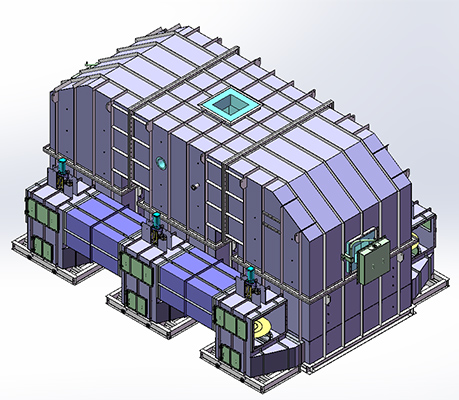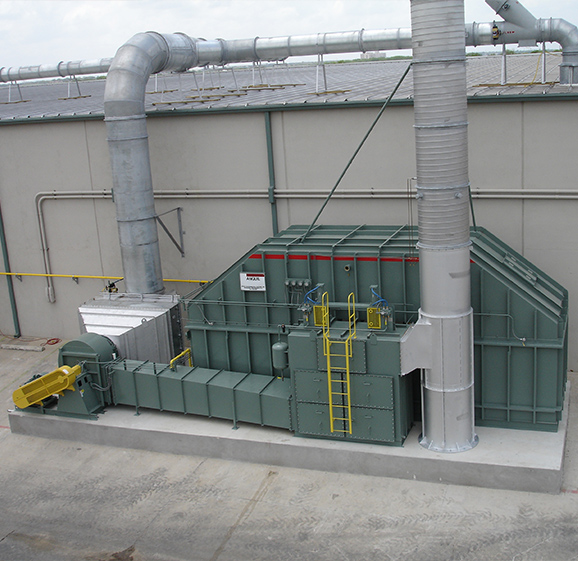Ideal applications
Very low VOCs concentrations
2021 官网升级中!现在您访问官网的浏览器设备分辨率宽度低于1280px请使用高分辨率宽度访问。
When catalyst is added to the media chambers of an RTO it is then referred to as an RCO. With the use of catalyst, the VOC compounds will oxidize at lower temperatures and converts to CO2 and water vapor, further lowering the need for auxiliary energy.

Regenerative Catalytic Oxidizer (RCO) consists of two or more insulated chambers filled with high temperature ceramic media. In operation, the process stream enters the oxidizer via an energy recovery chamber where the ceramic heat transfer media preheats it prior to introduce it into the oxidation chamber. As the process stream passes up through the inlet bed, its temperature rapidly increases. After the oxidation reaction occurs at the combustion chamber through the catalyst, the pollutant laden stream is converted into CO2 and water vapor, and release a large amount of thermal energy. The hot, clean gas exit via the 2nd recovery bed and leave the heat in the ceramic media to preheat the inlet process stream in the next gas flow cycle.
With the combination of catalyst and the ceramic heat transfer media, RCO greatly reduce the fuel consumption during thermal oxidization and the preheating gas flow, and further lower the operating cost.






Very low VOCs concentrations
1.Two-chamber or multi-chamber configurations;
2.Various burner options including electric heating elements or multiple gas fuel inputs (natural gas, propane, hydrogen) and ultra-low NOx.
3.Supplemental Fuel Injection (SFI);
4.Secondary Heat and Energy Recovery systems for waste heat utilization.
5.Acid gas scrubber module with a completely integrated control system.
